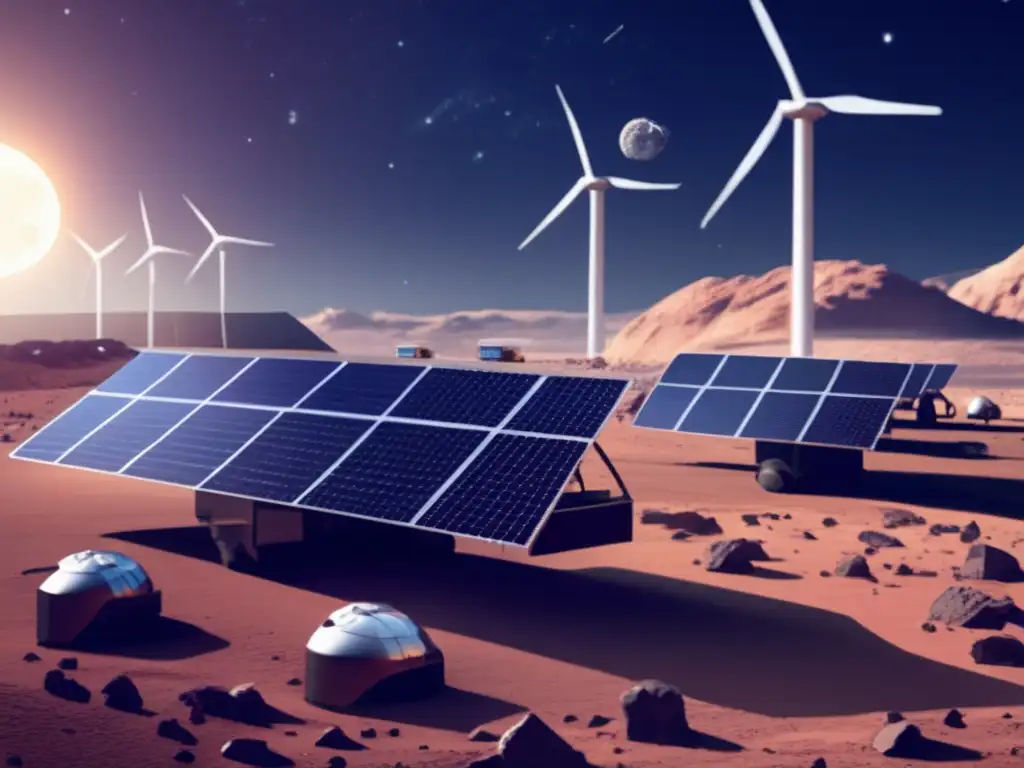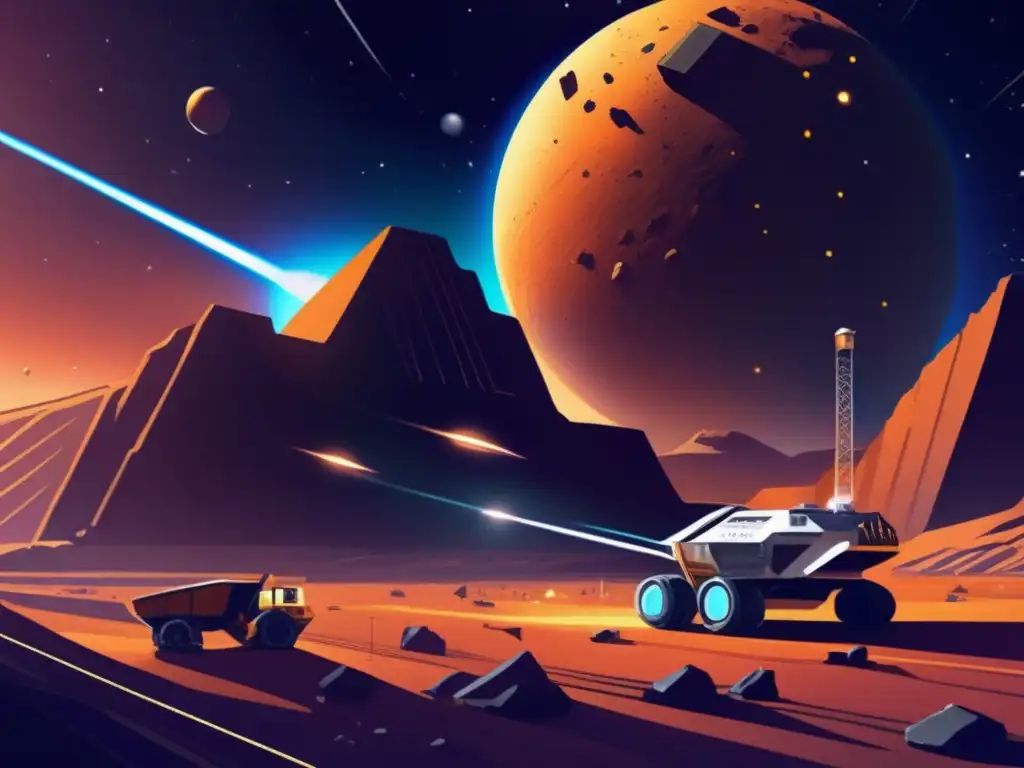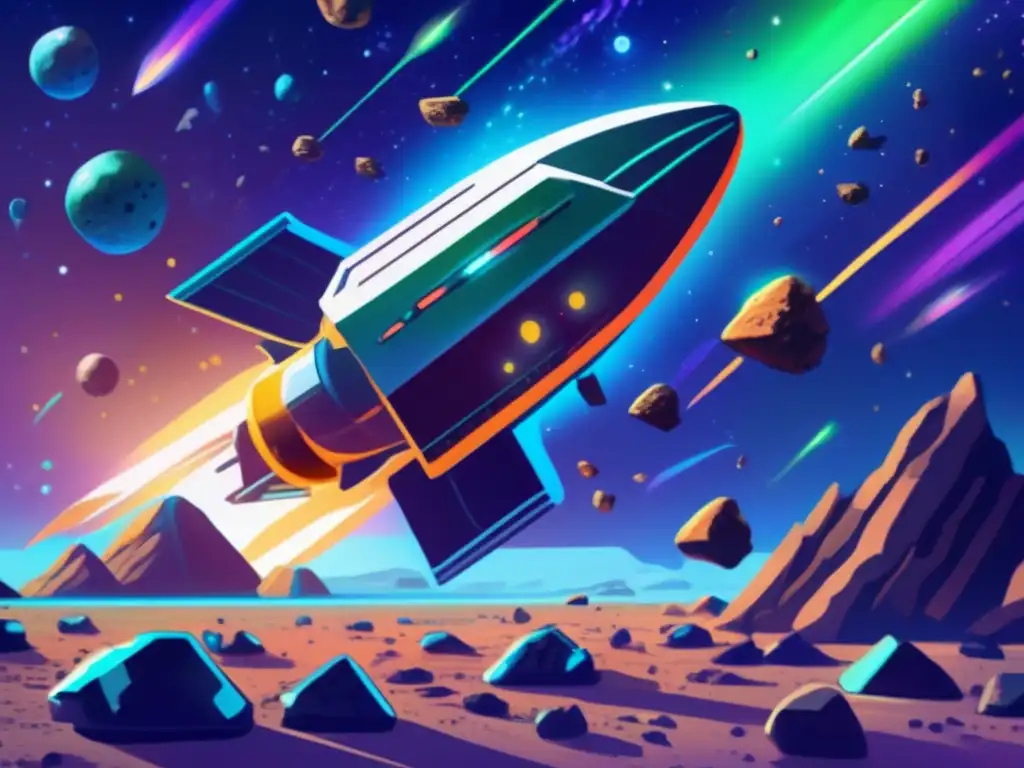Infrastructure Development For Asteroid Mining

Introduction
Asteroid mining has emerged as a promising industry that offers immense potential for resource extraction and exploration beyond Earth. However, the successful implementation of asteroid mining requires robust infrastructure development to support various operations. In this article, we will delve into the crucial aspects of infrastructure development for asteroid mining, including key considerations, challenges, and future prospects.
The Role of Robotics in Infrastructure Development

Automated Construction and Maintenance
One of the primary challenges in asteroid mining is constructing and maintaining infrastructure in a harsh and inhospitable environment. Robotic systems play a pivotal role in overcoming these challenges by enabling automated construction and maintenance processes. These robots can autonomously assemble structures, repair equipment, and ensure the smooth functioning of mining operations.
Teleoperation and Remote Control
Given the vast distances involved in space exploration, teleoperation and remote control capabilities are crucial for managing infrastructure development in asteroid mining. Human operators on Earth can control robotic systems deployed on asteroids, ensuring precise and efficient construction and maintenance tasks.
Resource Extraction and Processing
Robotic systems equipped with advanced sensors and drilling tools are essential for extracting resources from asteroids. These robots can identify valuable minerals, collect samples, and carry out preliminary processing activities, significantly reducing human intervention and associated risks.
Regulatory Frameworks and Compliance

Licensing and Permits
Infrastructure development for asteroid mining must comply with applicable national and international regulations. Obtaining licenses and permits is crucial to ensure legal and responsible mining operations. Governments and space agencies are actively working on developing frameworks that govern asteroid mining activities, addressing issues such as ownership rights, environmental impact assessment, and adherence to international space treaties.
Space Traffic Management
As asteroid mining activities increase, an effective space traffic management system becomes essential to avoid collisions and ensure the safety of mining infrastructure. Collaborative efforts are underway to develop protocols for orbital debris mitigation, collision avoidance, and clear communication channels between different parties involved in asteroid mining.
International Collaboration
Infrastructure development for asteroid mining requires international collaboration and cooperation. Governments, space agencies, and private companies are partnering to establish common standards and protocols, share resources and expertise, and foster a sustainable and inclusive approach to asteroid mining.
Sustainable Energy Solutions

Solar Power Generation
A reliable and sustainable energy supply is vital for operating asteroid mining infrastructure. Solar power generation, leveraging the abundant sunlight available in space, offers a viable solution. Solar panels deployed on asteroids can harness solar radiation to generate electricity, powering mining operations, and minimizing the need for fuel resupply.
In-Situ Resource Utilization (ISRU)
In-situ resource utilization is a key concept in asteroid mining that involves utilizing local resources for various purposes. Infrastructure development should incorporate ISRU techniques, such as using asteroid materials for construction, generating propellants, and manufacturing components. By reducing reliance on Earth-supplied resources, ISRU contributes to sustainable and cost-effective mining operations.
Nuclear Power Systems
For missions that require abundant and long-lasting power supplies, nuclear power systems offer a compelling alternative. Small modular reactors and radioisotope thermoelectric generators (RTGs) can provide a consistent energy source for infrastructure development and mining operations in the demanding environment of space.
Conclusion
Infrastructure development plays a pivotal role in realizing the potential of asteroid mining. Robotics, regulatory frameworks, sustainable energy solutions, and international collaboration are key factors that will shape the future of infrastructure development in this emerging industry. As technology advances and our understanding of asteroids deepens, the possibilities for efficient and sustainable extraction of resources from these celestial objects continue to expand.
We encourage readers to share their thoughts on infrastructure development for asteroid mining and actively engage with www.asteroidrealm.com. Feel free to subscribe, share this article on social networks, and participate in the comments section below. Thank you for your time and attention.
Additional Resources

For more information on asteroid mining and related topics, please refer to the following resources:
- NASA Asteroid Exploration Program
- Space.com - Asteroid Mining News
- Asteroid Mining Group
- International Astronautical Federation - Asteroid Mining Resources
- Asteroid Realm Blog
 Innovative Methods For Asteroid Resource Extraction
Innovative Methods For Asteroid Resource Extraction Innovative Spacecrafts For Asteroid Mining Missions
Innovative Spacecrafts For Asteroid Mining Missions Innovative Technologies For Asteroid Prospecting
Innovative Technologies For Asteroid ProspectingIf you want to discover more articles similar to Infrastructure Development For Asteroid Mining, you can visit the Asteroid Mining and Resources category.
Leave a Reply

Articulos relacionados: